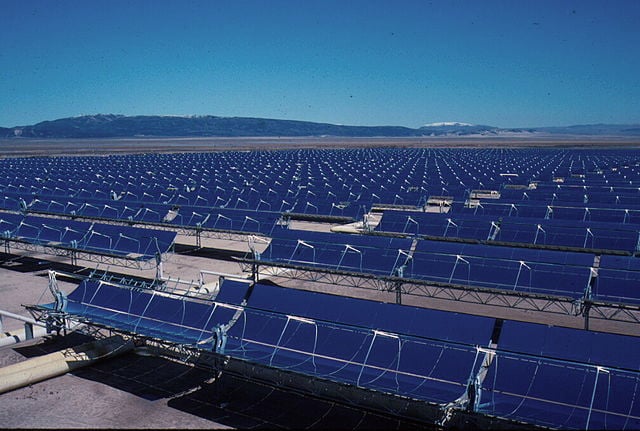It’s been amazing! Around-the-world reports have been pouring in about how clean air in many parts of the world has become. Countrywide lockdowns and stay-at-home/shelter-in-place orders instituted during the COVID-19 outbreak have led to tremendous reductions in not just driving, but public transit use, shipping (on navigable waters) and flying. All of them combined having had both a positive and profound effect in helping purify air and brighten glaringly dirty and dreary skies.

Calmatters Guest Commentary writer Mike Gatto asked whether the unobstructed, unsullied vistas revealed today, in effect, can be made permanent, in essence, one constant in an ever-changing world, presumably, remaining to be beheld and enjoyed by all.
The above then apparently framed in the context of a tanking economy, the former California State Assemblymember responded: “If history is any lesson, the answer is probably not,” further adding, emphasizing, “But it doesn’t have to be that way.”
Gatto’s absolutely correct: No ifs, ands or buts about it – and, by the way, the perfect segue to the next aspect of the discussion: the future.
A glimmer of hope
In this day and age, it shouldn’t be a global pandemic or an unraveling of the economy that enables cleaner air. We’re above and beyond that, at least in terms of technological capability, that is.
One lesson learned from the Corona Virus experience is that our collective response to the handling of the crisis is anything but a uniform one. This lack of cohesion has resulted in different outcomes regarding the spread of the disease in different jurisdictions and locations throughout the world – some places have experienced greater successes combating COVID-19 than have others. As of this juncture there is still no cure.
That provides a sort of assessment, gauge if you will, of the way that air pollution across the globe as it has to do with its mitigation has, in the past, been approached. Neither has it been universal nor completely thorough.
By some accounts, the school of thought is, once the pandemic is conquered – history has shown that similar contagions like SARS and MERS were eradicated, it is a widely accepted premise that we will likewise get past this latest pandemic – life will get back to what we’re all used to and air pollution will return to those levels evident immediately prior to the onset of the Corona Virus outbreak.
On the other hand, there may be apprehension, hesitation, reluctance, reservation on the parts of many to, say, fly commercially, for example, in close quarters in the company of others doing likewise. This could have the unintended consequence of less damage to the air due to a potentially reduced number of flights.
Moreover, more and more may be opting to continue working from home or remotely, for those who were able to do so which will equate to less travel for them. You get the idea.
Not to get ahead too terribly much, but there is an excellent opportunity to take what was uncovered – the hazy air in this particular instance – and run with or capitalize on that in moving forward. And, a faltering economy need not, and should not, be what is responsible for a far-improved air quality condition.
Reference earlier being made to technological capability, the means is already here to clean air, a possible side-effect of that being economic stimulus. It doesn’t need to be an environment-versus-the-economy paradigm.
Contemplative point: Good times or bad, the environment will endure, and independent of the state of the economy, be it strong or weak. But, absent an environment, plainly and simply put, an economy isn’t possible – in other words, the economy is subsidiary to the environment, not the other way around.
This being the case, each factor of the economic/environmental equation working in concert with the other will allow for the kind of component cohesion that produces a best-of-both-worlds situation. In this context, that is what we should be seeking, ultimately.
Unrelated, a brief reminder Air Quality Awareness Week is from Apr. 27th to May 3rd this year. Information about this can be accessed here.

Images: Dr. Edwin P. Ewing, Jr., Centers for Disease Control and Prevention (upper); USA. Gov – BLM – BUREAU OF LAND MANAGEMENT (lower)
This post was last revised on Apr. 30, 2020 @ 7:32 a.m. Pacific Daylight Time.
Hi there,
Such a nice article. I am Amit Bharti from India. I am a pharmacist blogger, writing blogs on pharmaceutical education and medical science. Here in India the air quality index has been changed drastically and the quality of air has become so good. The water of river ganges has been so pure that a person can drink it directly without any filtration.
I would love to ready many more articles from this website.
I would request to please visit my website for feedback good or bad may be, would be appreciated.
Link given below: https://pharmakeyduniya.blogspot.com
Great news and story. Let’s keep this trend going.
If by “trend” you’re alluding to the trend in improved air quality, which, no doubt you are, then let me be the first to second that.
Thanks, I very much enjoyed reading this, almost as much as I have enjoyed the spectacular skies of the past few weeks.
If the COVID-19 pandemic has shown us anything it’s that there is a desperate need for action on climate change to be taken and as quickly as possible. As you put so well “absent an environment, plainly and simply put, an economy isn’t possible”.